Review: Öhlins TTX2 Air Shock
If any suspension product can be described as iconic, it's Öhlins' TTX shock. Apart from its illustrious motorsport heritage, the twin-tube shock with its distinctive yellow spring has won many World Cups and accolades in its own right in the MTB world. But wherever you sit on the air vs coil debate, the vast majority of us ride air shocks. Öhlins has an air shock too, but it remains a rare sight compared to air-sprung rivals from Fox and RockShox and is often overlooked for its coil counterpart. So is that any good?
Öhlins released their first MTB air shock (the STX22) in 2015. It used a single-tube design in a bid to save weight, and to be honest, it was a bit of a flop. First released in 2018, the TTX air combines an air spring with Öhlins' signature twin-tube damper (like the coil shock), which means the damping oil circulates between two concentric tubes, rather than being pushed back and forth inside a single tube. If you want to find out more about the differences between single tube and twin-tube dampers, I'd recommend this video.
There are two variants of the TTX air - the TTX1 and the TTX2. The difference being the TTX2 has more air volume in both the positive and negative spring, thanks to a twin-can design (there's a sleeve around the main air can which offers extra volume and can be tuned with volume-reducing bands). This makes the TTX2 more linear, so it's recommended for more progressive or longer travel bikes. If you're not sure which is right for you, Öhlins has an online tool to recommend the most appropriate shocks (as well as baseline settings) for your bike.
I bolted a TTX2 air onto a familiar Privateer 161 to see if Öhlins' air shock has been unfairly ignored.
Intended Use: Trail/Enduro
Spring System: Dual chamber air with transfer port and volume spacers
Damper System: TTX Twin Tube
Mounting: Trunnion or standard eyelet
Adjustments: Low-speed compression and low-speed rebound via 3 mm Allen key (13 clicks each), high-speed compression (2 settings) plus "pedal" mode via thumb lever, air pressure, volume spacers
Weight: 524g (205x65mm w/hardware) - an equivalent RockShox SuperDeluxe is 540g
Price: €915.71 / £825 / $780 USD
More info: Öhlins MTB
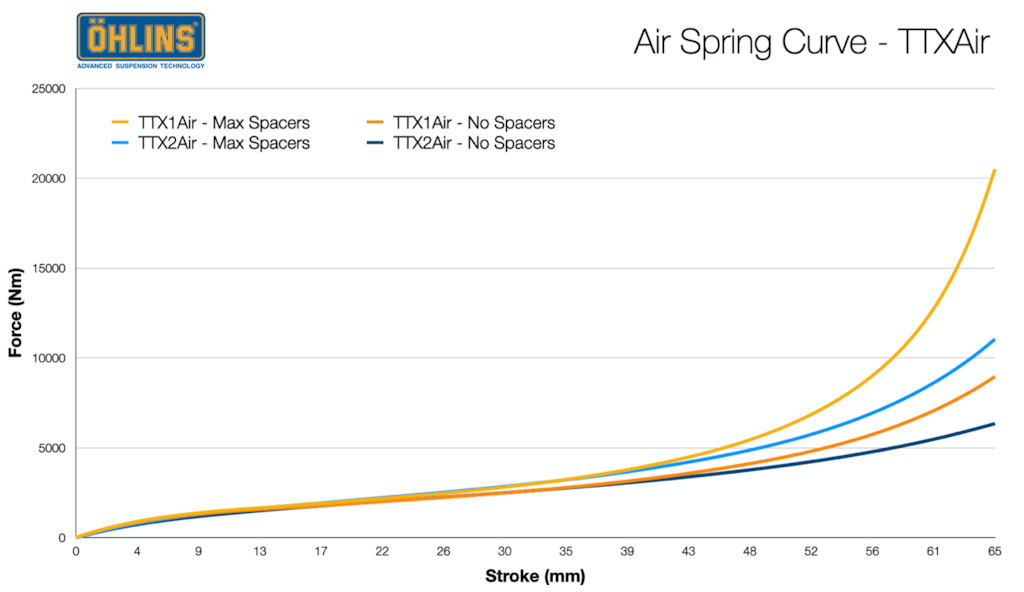
Details & Features
The layout of the TTX2 Air's damper is a little different from its coil counterpart. With the coil, the rebound adjuster is on the bottom of the shock and adjusts the valving on the main piston, whereas the air shock's rebound adjuster is located on the reservoir and controls the oil flow as it passes from the outer tube to the inner one. This layout is more similar to what you'd see on a Cane Creek shock or older versions of the Fox X2.
The low-speed compression and low-speed rebound adjusters both require a 3 mm Allen key to adjust. Opposite them is a high-speed compression lever which can be toggled by hand. It offers two settings for high-speed compression damping, plus a third position that closes off the low- and high-speed damping for a firmer platform for climbing.
The way the high-speed compression adjustment works is a little different to most dampers. Usually, when you turn the high-speed adjuster clockwise, it preloads a spring which in turn holds the high-speed valve shut more tightly. In the TTX, the high-speed adjuster changes the path the oil takes as it enters the shim stack. In the firmer setting, the oil enters the shim stack nearer the middle, so it has a tougher time pushing open the shims to flow past - a bit like pushing open a heavy door from nearer the hinges. The downside to this design is it limits you to two or three high-speed settings (flow paths), but Öhlins say it offers a more proportionate damping response when compared to a preloaded valve which "pops open" at a certain compression speed. This reasoning is not dissimilar to Fox's rationale for introducing their VVC valving, found in their GRIP2 forks and the rebound side of the latest X2 shock.
The air spring on this TTX2 model uses a sleeve to increase the available volume in the positive chamber so as not to make it too progressive with more progressive frame designs. This in turn allows for a slightly larger negative chamber for a softer initial stroke.
The volume of the positive air chamber can be adjusted in two ways: by changing the size of the volume spacer in the eyelet of the shock or by adding or removing volume bands in the sleeve. This is a little confusing, especially as the eyelet spacers aren't marked with their volume and different combinations of eyelet spacer and sleeve spacers could deliver the same total volume, but it does the job of tuning the progression through a wide range. Despite being designed to be more linear than the TTX1, the TTX2 can be made quite progressive with the maximum volume spacers.
The air spring works in a similar way to most others on the market, with an air piston that sits between a positive and a negative air chamber and a transfer port to allow the two to equalise at a certain point in the travel. The air valve on the sleeve can be set to various angles to make it easier to access depending on the frame.
Seven questions with Öhlins Racing Technician, Terje Hansen
 How does the damping compare between the air and the coil shock?
How does the damping compare between the air and the coil shock?
In general, we are using way more damping in coil shocks compared to air shock due to the performance and function of an air spring. [This is because an air spring acts a bit like a damper - it absorbs some energy during compression and turns it into heat - so less hydraulic damping is required.]
 It feels like the rebound damping is light and free-moving at slow speeds, but not too fast when returning from deep in the travel. Am I right in thinking it's a relatively linear rebound tune?
It feels like the rebound damping is light and free-moving at slow speeds, but not too fast when returning from deep in the travel. Am I right in thinking it's a relatively linear rebound tune?
You’re correct!, we have chosen a linear rebound damping curve (in all Öhlins products more or less), some bikes need more or less low-speed damping. There’s a lot of comfort and traction win or lost in the right choice of rebound damping. The better of a rider is, the less rebound you need. [Cue every Pinkbike reader running their rebound fully open from now on.]
 Do you offer different damping base tunes for different suspension designs or riding styles?
Do you offer different damping base tunes for different suspension designs or riding styles?
The setting that the shock comes with, in the box, is something we have tested on a lot of different bikes and we feel we have made the best compromise with our choice to fit as many bikes as possible. With the external clickers, air pressure and volume spacer you as a customer would come a long way in chase of the perfect performance of your suspension
 With the coil shock there is a setting bank for service centres to adjust the base tune via shims to suit different bikes - is the same true for the air shock?
With the coil shock there is a setting bank for service centres to adjust the base tune via shims to suit different bikes - is the same true for the air shock?
Yes, you could easily do a setting change at an Öhlins service centre if it’s needed to adapt more to your weight, riding style or if you had the shock on one frame model and then you change to a bike that requires a different setup due to different leverage and anti-squat. Öhlins provides setting banks for every product category we make to the service centres to help them choose a setting they might need.
 How can I tell what size of volume spacer I have in the eyelet end of the shock? They don't seem to be marked?
How can I tell what size of volume spacer I have in the eyelet end of the shock? They don't seem to be marked?
No, and that’s something we are working on, attached is a chart of spacers on page 11.
 Does the firmness of the climbing mode depend on the LSC adjuster position, or is it independent?
Does the firmness of the climbing mode depend on the LSC adjuster position, or is it independent?
They work independently on the TTX Air.
 You no longer make the single-tube STX shock, right? What do you see as the main advantages of twin-tube over a single tube for an air shock?
You no longer make the single-tube STX shock, right? What do you see as the main advantages of twin-tube over a single tube for an air shock?
The main advantages with TTX technology is the adjustability from the external adjuster, more responsive and controlled buildup of damping which gives the riders a controlled behaviour of the bike.
 Why does the TTX air have the rebound adjuster at the head of the shock while the coil has it at the eyelet?
Why does the TTX air have the rebound adjuster at the head of the shock while the coil has it at the eyelet?
The TTX Air has a solid shaft and a different position for the one-way valve compared to TTX 22 M [coil] and therefore it’s possible to have the rebound adjuster in the head.
Setup
Rear travel: 161 mm
Shock stroke: 65 mm
Average leverage ratio: 2.48
Overall progression: 17%
Fork pairing: Fox 38 Factory @ 180 mm & RockShox Zeb w/ Secus @ 190 mm
Rider Weight: 88 Kg
Öhlins' online suspension guide recommends appropriate products for your bike and starting spring settings based on your weight and sag preference. I weigh about 88 kg in full riding gear and I chose to test on a Privateer 161. To achieve 28% sag at the shock, it recommends setting the TTX2 with 202 psi and 10 CC of volume spacers. This did indeed give me about 18mm (28%) sag and a good overall setting, though I could afford to go a touch softer for mellower, more natural terrain.
The online tool doesn't make recommendations for damping settings, but I ended up with LSC 5-10 clicks from closed, rebound 6-7 clicks and I toggled the High-speed compression lever between its settings regularly: setting 1 for natural terrain, 2 for bike-park/DH and 3 for climbing.
Performance
I did sweeps for all the adjusters (testing from fully open to fully closed on the same section of tack) and the range isn't super wide. Even with everything fully closed, it's still totally rideable (if too damped for my liking). So if you're the kind of person who prefers (or you think you prefer) a really damped feel, or if your bike has a very high leverage ratio, you may need to get a firmer base tune than stock. At the other end of the scale, the shock is pretty hard to ride with the rebound fully open (at least with the pressure and bike I'm running it with) as it tops out all the time. That means for lighter riders or bikes with lower leverage ratios, there should be scope to get it running fast enough for most people. While the range of adjustment isn't massive, I'd say it's well-judged for teh majority of riders in the middle part of the bell curve.
The recommended setup is quite progressive. Running 28% sag (202 psi) I was only using all the travel on the biggest landings like tagging the landing of a large stepdown. A small difference to pressure/sag makes a big difference though - 195 psi allows the use of all the travel more regularly and is noticeably softer. My optimum window was in the 190-202 psi range. I tried removing a volume spacer from the air sleeve, but overall I preferred using a touch more sag and generous progression to add resistance towards the end.
The compression adjustment is usable for me at either extreme, but you can use the low-and high-speed compression adjusters to meaningfully fine-tune the support and balance of the bike. Depending on the shock tune, I often find the LSC adjuster on a RockShox SuperDeluxe adds too much harshness on small bumps before it makes a meaningful difference to chassis stability, so I often tend to run it fully open. Whereas the TTX seems to make more of a difference to stability relative to small-bump harshness.
Having to get a tool out to adjust the low-speed damping can be a pain, but I regularly used the HSC lever to pick between the two settings (1 for steep and natural, 2 for jumps and berms). There's something to be said for a simple choice of two distinct positions over a range of twenty-something barely distinguishable clicks - you're more likely to actually use the adjustment if it's tool-free and easy to keep track of. That said, the two HSC settings aren't wildly different and I wouldn't mind a third HSC setting (like you get on the DH lengths of the coil version) in addition to the climbing mode.
Speaking of which, the climbing mode is a nice balance between firmness and comfort. I'd say it's firmer than the climb switch on a Fox Float X2 but softer than most SuperDeluxe tunes. It makes the bike sit up noticeably higher at the rear and cuts pedalling oscillations nicely when sated, yet still allows the suspension to do its thing when the terrain gets rough. It's ideal for off-road technical climbing. The firmer setting found on most SuperDeluxe shocks (again, the firmness of the RockShox climb mode firmness depends on the shock tune) is better for out of the saddle pedalling and tarmac climbs. Plus, in my opinion, the more unsubtle lockout means you're far less likely to leave it on accidentally for a descent because you're aware of the lockout the whole time. It's up to you what kind of lockout you prefer, but the TTX offers a middle of the road setting.
The shock naturally sits a couple of millimetres into its stroke and extends slightly when the rear wheel is lifted off the ground. The same is true of a Float X2 but not so much a SuperDeluxe, which sits more forcefully against its top-out bumper. In theory, this helps the rear end feel a little more ground-hugging on super rough tracks when the rear wheel is regularly reconnecting with the ground because there is no preload force to overcome before the shock can start moving. But there's no mistaking the TTX air for a coil shock; it's a little stiffer when moving through the first part of the travel and that makes it a little less settled into its travel and stable than a coil shock. I wasn't able to measure the spring curve like I've done in the past but I'd say it feels similar to a SuperDeluxe with a standard air can, though not as linear as that shock fitted with a MegNeg air can.
Damping consistency is hard to say too much about without testing on a damper dyno, but I didn't notice any harshness or bucking towards the end of long descents as I have with some air shocks.
How does it compare?
I've been comparing the TTX to its main rivals throughout this review to try and provide as much context as possible, but during testing, I rode it back-to-back with the RockShox SuperDeluxe Ultimate the Privateer came with. That shock was running the stock LNL1 damping tune and standard (not Megneg) air can.
Comparing shocks is particularly tricky because there are so many variables (suspension design, damping tune and setup). But in this case, I would say the TTX feels a bit more controlled on the big stuff (landings, big compressions etc.) while still being at least as supple over the small stuff. In fact, if anything I felt a touch less harshness through my feet through rough chatter despite testing the TTX with the HSC in setting 2 and the LSC on the SuperDeluxe fully open.
I put this down to the more linear damping tunes making the TTX feel more controlled on big stuff yet suppler on the small stuff, but that's just a hypothesis. Could the SuperDeluxe perform better with a different damping tune installed? Almost certainly. But one advantage of the TTX is the ability to change the HSC damping with a flick of a switch. On the other hand, the option of the MegNeg air can is a big advantage in RockShox's favour, particularly for more linear suspension designs, as it offers a more stable, supportive and supple-off-the top feel. So with a bit of fettling, the RockShox could be as good if not better. As always, suspension performance is 90% about setup.
Speaking of which, RockShox's sag markings, tool-free adjusters and the single type of volume spacer all make it a bit easier to set up.
Servicing
Not that many people pay them any attention, but the recommended service interval on the air sleeve is 100 hours, which is on par with other air shocks. You can do it at home but you will need a shaft clamp as well as the service kit and lubricants.
For a damper service, you'll likely need to send it to your local Öhlins service centre.
Issues
I had one shock which was reluctant to equalise due to a partially blocked transfer port. This meant if I dropped the pressure the shock would "suck down" into its travel and if I increased the pressure it would top out, even after trying to equalise the spring pressures. That shock was sat in a cupboard waiting to be tested for over six months (fully pressurised) so perhaps that has something to do with it. I asked my local suspension tuner (Sprung Suspension) if they'd heard of similar issues with the TTX air and they hadn't. A second shock had no such issues, and the same is true of a TTX1 air shock I have been riding on a YT Izzo. But right out the box, the TTX is quite tricky to equalise. You have to cycle the shock very slowly to find the point where the air passes through the transfer port and there isn't the loud hiss you get with other air shocks. I'd recommend over-pressurising the shock, then equalising it before checking the pressure has gone down so you know air has moved into the negative.
+ Impressive overall performance in terms of sensitivity, support and control
+ Useable range of adjustment which should be enough for most people, plus settings bank for outliers
+ Nicely-balanced lockout feel
- Not the most adjustable shock
- Setup takes a bit more care than RockShox
- One shock I tested wouldn't equalise properly
- Pricey
Pinkbike's Take
42294 views




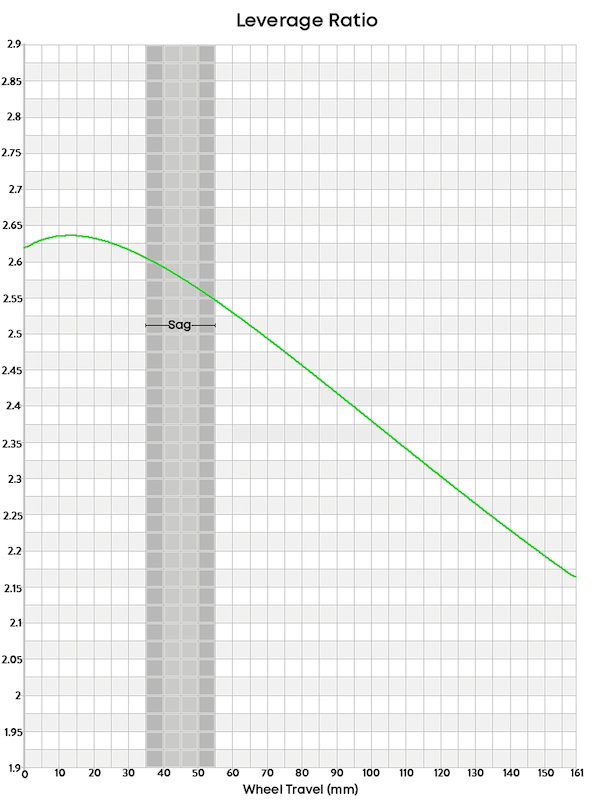

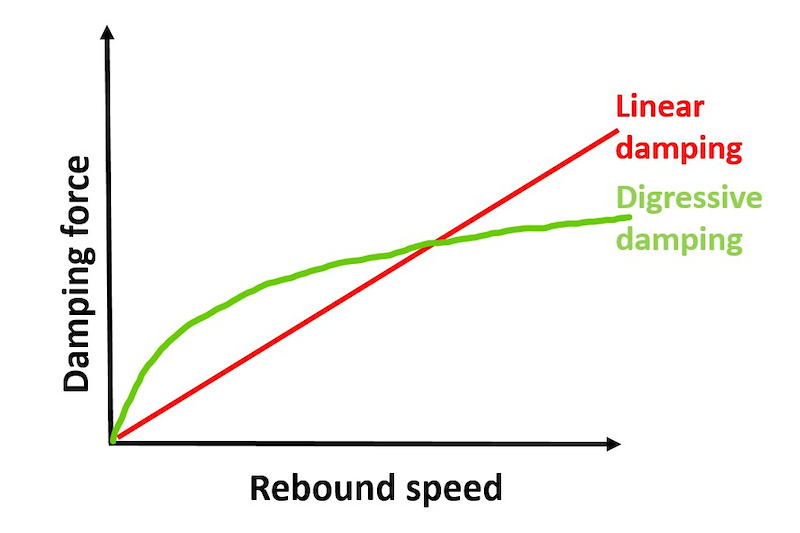
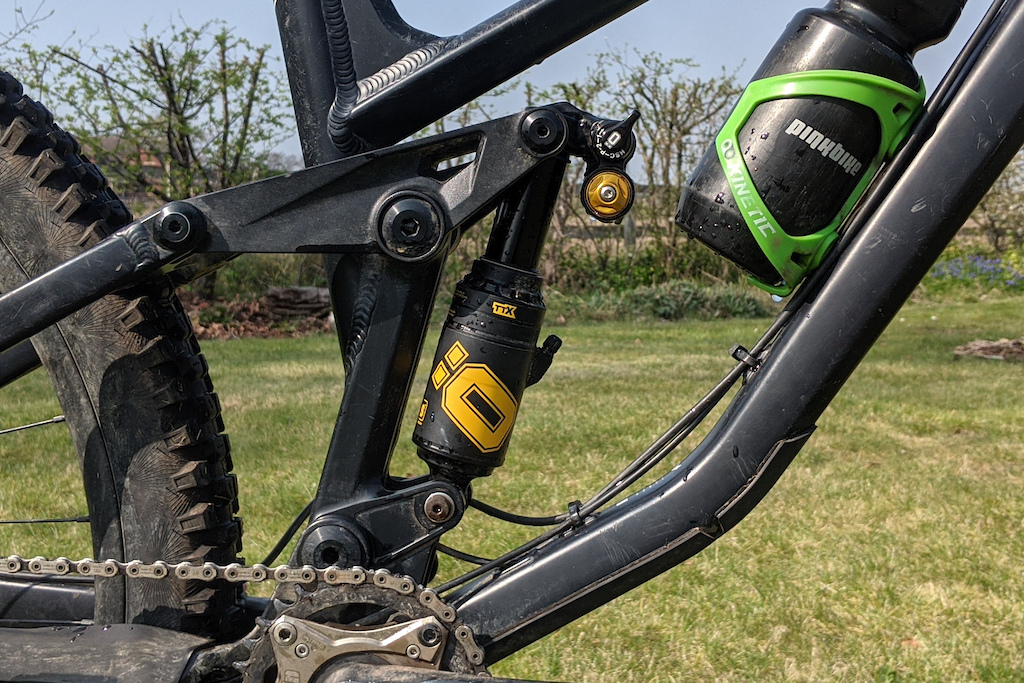
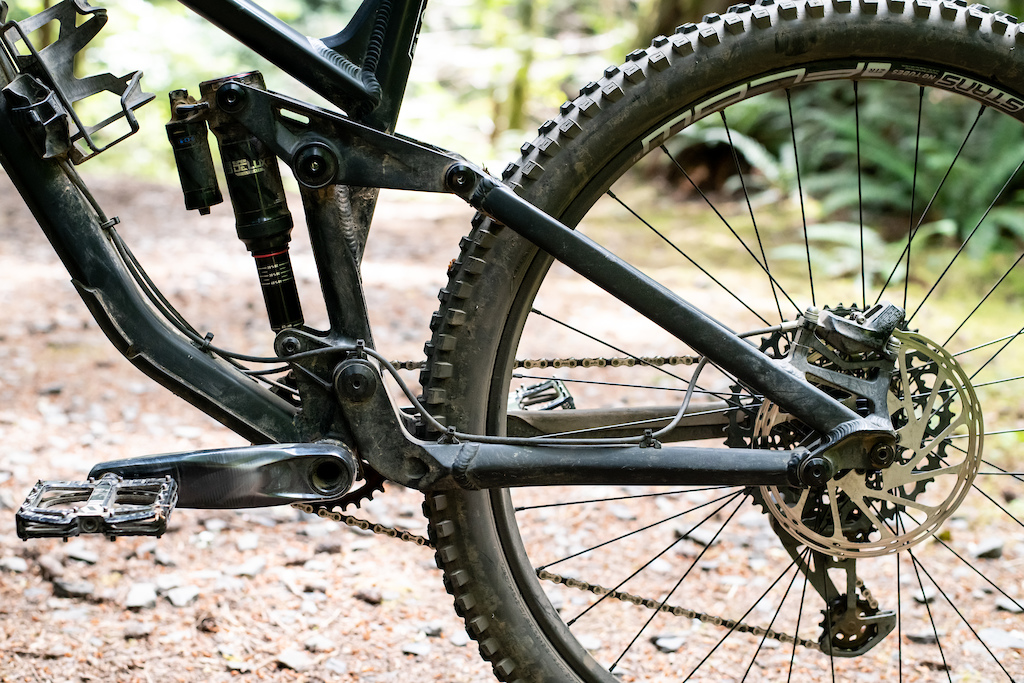

 Member since Dec 29, 2014
Member since Dec 29, 2014
The main downsides are it's an involved process to change travel in coil form. Not difficult, but it's not fast either. It's faster to convert from coil to air than it is to change the travel in coil form. And the A2C is longer than other forks of the same travel due to the crown being overbuilt and tall. Other than that, the coil Ohlins offerings are exactly what I expect from them, having had Ohlins suspension on my motorcycles and sportscars in the past.
Props to RockShox for having the most home adjustable shocks. MegNeg and volume spacers can dramatically alter how the shock works and are easy to install/change out.
If I got a bike with an Ohlins I’d likely keep it, but not worth the cost for an aftermarket purchase.
Also wish the Ohlins had been tested against an X2.
Not saying that Putin is in ANY way in the right, just that we barely have better leadership - ours are just more conniving and subtle about it (sometimes anyway).
..and I would dare to say do not trust anything from what you hear or see, this is the greatest marketing & communication conflict ever!!!
this discussion had an unpredictable rebound Ohlins
You are right, peaceful democratic values should be upheld universally and there should be consequences when these are broken, I just think that our application of 'justice' is simply targeted at when we benefit and not because of unbiased altruism.
Agreed on not turning a blind eye on wrongdoings that might have negative consequences if acted against. If we want to remain 'the world's policeman', we must hold ourselves to a higher standard.
And yeah I definitely agree with you. I think the subject of which country is held, as you say, 'the world's policeman' is really interesting. Personally I think we might see this change over the next >15 years as Asia and the East continue their economic rise and wealth becomes more concentrated over there vs the west.
Rad, we are the same weight! Might need to give it a shot. Though I really do think the Float X is a good shock as well
Pretty sure this in intentional on RockShox's part. They keep moving transfer ports and/or piston heights to maximize physical topout height by minimizing pneumatic topout. I think it's stupid, trying to eke out a couple more mm of indicated travel, while adding harshness off the top because the negative chamber pressure is so low at topout.
To those weirdos who obsessed over that last 2mm of travel, just go back to an old fork with a coil negative, max out the pressure, and marvel at your extra mm's over that lightweight rider with normal pressures and a plush fork, just getting _robbed_ by the coil neg "holding the fork down".
Isn't that a two-way street? It also "gives up" some energy during expansion and gets cooler... Example: a propane tank getting frosty as it empties and the pressure goes down.
Ok, it's RS, so even linear tune is digressive because the LS rebound circuit. Btw, RS linear tune simply wrecked ReStackor software last time I tried to compare it with standard tunes, because the shims are so f*n stiff and piston has so little flow ...
You don´t need no tunig piston or anything. The factory piston is sufficient.
I 100% do not recommend changing the oil spec to a heavier weight oil. Thats bro science straight from 70s harley port / orifice / emulsion suspenion.
clearly "linear" or not this rebound cisrciut has no bleed. Could you share your dyno plots?
Changing viscosity has everything to do with orifice damping which is present on the LSC circuit and also on LSR when you get rid of this LSR stack (and introduce bleed to LSR, just like NSR kit does).
It feels like I got away with murder....
Had to build a new bil last summer as my Fuji Auric LT snapped and they couldn't get me a new frame.
I scraped together a bike from a unused Marin Alpine Trail XR frame. Bought a Rockshox Suoerdeluxe from a Specialized Enduro and cut the travelspacer. It worked ok, but no compression knob, ran harsh, only 6 clicks of rebound of which I didn't feel nothing.
Threw the TTX on.
It so smooth even with the wrong settings.
Landing from drops, soft and comfortable.
Rolling over rocks and roots. Just tracks every thing.
I knew it would be good, but not this good.
Just rode around with a smile laughing.
Now I need a new fork to match the rear :/
I think he's dead wrong, though. For a given spring rate, precise rebound damping tuning is very personal-preference, ride-style orientated, and bike dependent to an extent.
Bleeding by hand definitely gives a more thorough bleed compared to whatever system Fox uses at the factory too.
I built the stumpy with a 36 fork (I'm 215lbs and pretty aggressive), and now with ohlins shock, I would say the frame keeps up with the fork (if that makes sense). Its a weapon!
Techincally, Ohlins and Cane Creek work differently, even tho they are both twin tube. The Ohlins is one-way, with traditional rebound via shim stack on the push rod, while CC is true double barrel with both rebound and compression metered external of the shaft body.
^^^ This I found surprising. Is this because of friction in the air seals?
Any chance @VorsprungSuspension could peer review?
www.pinkbike.com/news/hlins-rfx36-m2-smashpot-coil-conversion-kit-now-available.html#cid3220694
Basically exactly what the above quote said with a few more details.
As Vorsprung mentioned previously, it's the polytropic behavior of the entire air spring system that matters: that the heat enters and leaves the system through different paths, thus at different rates.
This means an air shock can run less rebound damping to stay controlled compared to a similar coil. Unless you have gone mental with volume spacers........
This is one of the things we've grappled with for the past 10 years, and honestly debated whether or not to even discuss publicly, simply because it is so thoroughly confusing for people who don't have their head in this all day every day. Makes it exceptionally difficult to display accurate air spring curves too, because they're only really accurate at one velocity/displacement profile, but the most relevant and consistent spring curve to consider in my opinion is actually the most basic isothermal curve.
Do you have plans to tune charger 2/2.1 dampers like you do for Fit 4 anytime soon? Would be very interested if you did.
(I know why, and Vorsprung answered it technically correct, the best kind of correct, so we all can know now. Just wondering if you have more than word soup.)
Here's the thing. You said a "jackdaw is a crow."
Is it in the same family? Yes. No one's arguing that.
As someone who is a scientist who studies crows, I am telling you, specifically, in science, no one calls jackdaws crows. If you want to be "specific" like you said, then you shouldn't either. They're not the same thing.
If you're saying "crow family" you're referring to the taxonomic grouping of Corvidae, which includes things from nutcrackers to blue jays to ravens.
So your reasoning for calling a jackdaw a crow is because random people "call the black ones crows?" Let's get grackles and blackbirds in there, then, too.
Also, calling someone a human or an ape? It's not one or the other, that's not how taxonomy works. They're both. A jackdaw is a jackdaw and a member of the crow family. But that's not what you said. You said a jackdaw is a crow, which is not true unless you're okay with calling all members of the crow family crows, which means you'd call blue jays, ravens, and other birds crows, too. Which you said you don't.
It's okay to just admit you're wrong, you know?
It’s due to a process known as adiabatic cooling, a property of thermodynamics. A gas, initially at high pressure, cools significantly when that pressure is released.
So I listened to an interesting podcast over here: http://www.vitalmtb.com/features/TECH-TALK-Air-Shocks-Versus-Coil-Shocks-Whats-Better,2065 And once they mentioned adiabatic issues, I had to start googling because it’s a while since I did my engineering degree and the field of loudspeakers I work in doesn’t really suffer from adiabatic problems (unlikel in very high output PA compression drivers, where it’s one of the main sources of distortion). Basically, when you compress a gas it gets hot. You’ll know that if you’ve ever used a bike pump – or in the reverse, used a CO2 cartridge. If the heat can escape immediately then you have an isothermal situation and this heat does not cause a temperature change in the gas which would change the pressure. In an air spring which is moving quickly there is no time for the heat to escape, so this heat causes an additional pressure change (other than that caused by the volume change). There are some equations to describe this but in short, very high shaft speeds will result in a adiabatic behaviour whilst very low shaft speeds will result in isothermal behaviour. 100% adiabatic behaviour of air increases the spring rate by about 32% according to my quick sums. That is a lot! In reality what’s going to be happening is a mix of adiabatic and isothermal behaviour, which is called polytropic behaviour. So if you design a “perfect” air spring, whose positive and negative springs create a totally linear spring rate, it will still not feel like a coil, because the coil’s spring rate will be always the same, regardless of shaft speed, whilst the air spring will ramp up by as much as 30% when moving fast. That’s why, whatever you do with the suspension design, air springs feel more “poppy” and coil springs feel more plush and stuck to the ground. Posted 4 years ago
I just wanted you to stop saying useless "air better than coil because heat when compress, cool when expand" without backing it up or completing the explanation, even with just a link (or even reading the surrounding comments, it seems).
Justinfoil is being a bit on the academic/pedantic side here, but it seems clear to me that you started out just repeating things you heard without understanding it but acting like you did.
Justin asks if you really understand what you’re saying and you say “here, I googled it for you.” I say “google isn’t understanding” and you say “oh, so you’re saying I made it up!”
This is the one of many ambiguous statements that ruins this test for me. I paid $800 for one of these- haven’t run it yet, and was hoping to get an inside scoop. This is a shock test on a bicycle, not an episode of Tuesday Tune!
I think what he is saying is that to the best of his ability to feel it out, it remained consistent, but that actual consistency can only be measured by some type of instrumentation. IMO that's a very fair, objective statement compared to just going based on feel, which is subject to a number of factors.
Maybe it was the "didn't notice _any_ harshness". None? Zero? Hard to believe, or it's evidence it wasn't pushed hard enough.
Posers on the other hand make strong claims and either fabricate evidence to justify it or provide no evidence at all. They hide their lack of knowledge behind confidence and statements that you have absolutely no way of disproving. Basically exactly the opposite of what the review did.
Word to bike industry . Ignore the sales guy , ignore the designer ,. Let the engineer s make parts that work and function for years .
So in your humble opinion, how do you feel Ohlins did with the transfer port in this case?
Let's say I purchased this new and improved rear shock . Are you going to fix my problem for free ? as I just invested say 800$ on this shock. Can't ride when the shock is off the bike .
So I buy this shock and can't ride with it until it's fixed and it's going to cost me money . Even if warranty pays for it . Who pays for my down time . ?
This is the opposite of a reliable product.
This isn't theory as I own a rear shock that uses separate air valves for positive and negative air .
Thank you!
Like any shock, I will never stop tuning and logging, and tuning and..
Tuesday Tune convinced me twin chambers are the only way to fly. And a CC DB Inline Air. What a massive improvement that shock was to my last bike!
On a rear shock, the surface area of the piston on the negative side is about half what it is on the positive side. Most rear shocks have max pressure ratings somewhere around 300psi. In order to balance forces at topout, you need to be able to put in about double the pressure on the negative side than the positive side. On a fork, the piston area difference is only about 10%, so you only need about 10% higher pressure in the negative chamber than the positive.
Curious what shock you're using that has a separate valve for negative air though, you said a SID dual air shock? The one from 20+ years back? I'm not even aware of anyone making such a thing currently. Those things definitely run a lot higher pressure in the negative chamber than the positive (or they have a TON of preload). The Giant NRS used those back in the day specifically so they could run it with zero sag.
The design has its limitations too - it needs quite high pressures for a given spring rate, pumps huge volumes of oil through the damper circuits (because the damper piston displacement is the same as the air piston displacement) which requires extremely high-displacement/low pressure valves, and without building a separate test unit, you can't dyno the damper separately from the spring. Oil expansion also directly impacts the spring rate in a more significant way than a normal shock. There's a few other design aspects that I think could potentially be problematic but without testing one properly I could not tell for sure.
Overall though, I think it is the most innovative shock we've seen in some time, plus it looks cool as hell. However innovative design alone does not necessarily guarantee performance or reliability.
I’m 100% certain there was brand loyalty going on here, and it wasn’t Ohlins.
** Super Deluxe
Hijack but you’re commenting here and the article is about shocks so....
On my Hazzard-equipped Megatrail, running sag around 25%, I’m having a hard time perfecting my settings. I’ve dialed it in to where bob is acceptable while pedaling (could be a little less), but it’s harsh on fast square edges, while also giving up way too much travel on medium-size hits during technical moves, like coming off of a log roll-over.
More high speed? More low speed? What can you suggest?
Low speed adjustments is generally for chassis stability, while high speed is typically more useful for tuning reactivity.